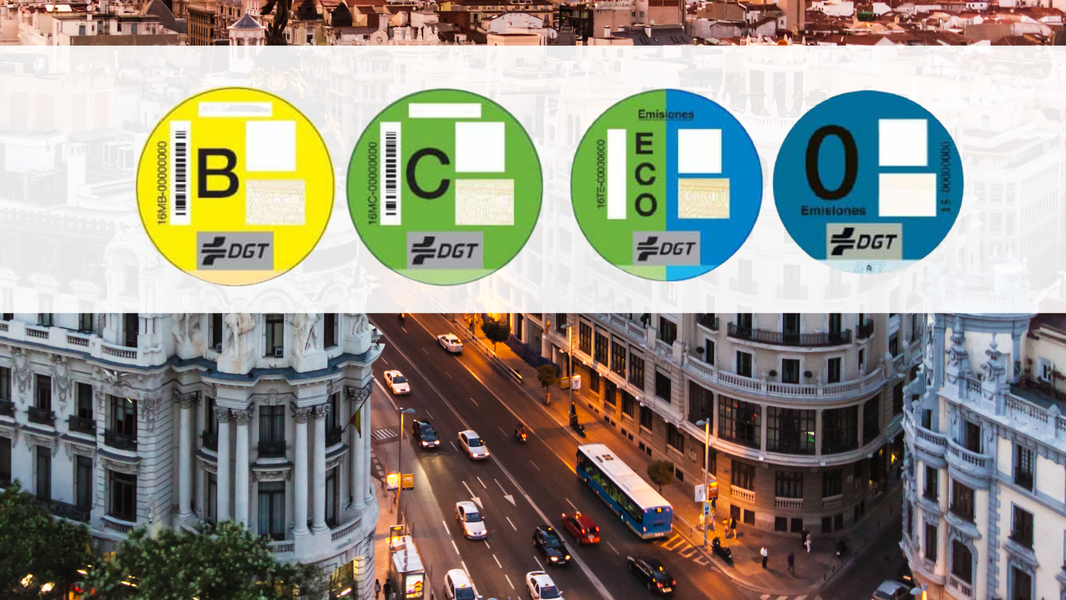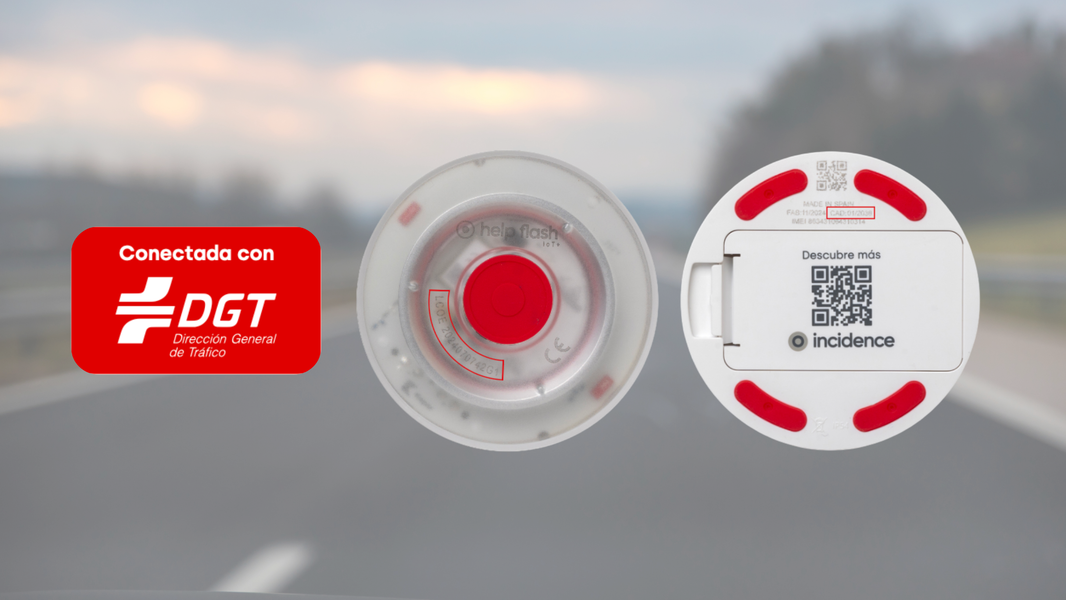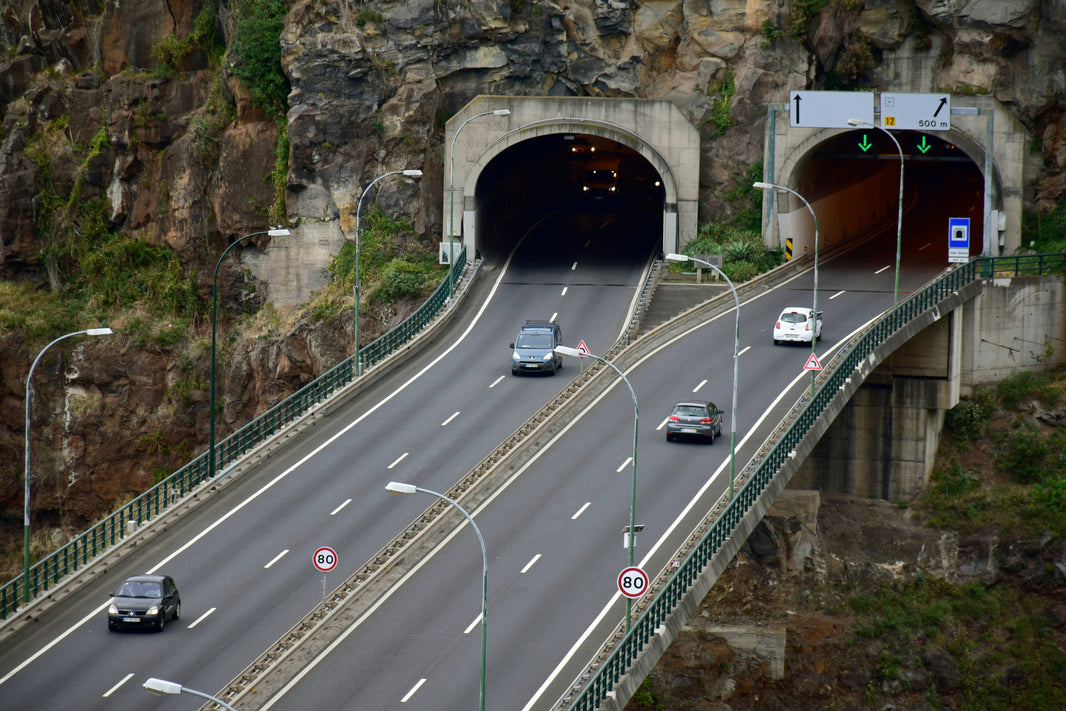Using a GPS beacon in our vehicle, we can send precise and immediate information about our location to the General Directorate of Traffic (DGT) in case of emergency. The device provides precise information about the vehicle's location, which will be communicated to other road users within minutes, which is tremendously effective in terms of road safety.
In critical situations, such as accidents or breakdowns, this communication and prevention system is based on the use of the Global Positioning System (GPS) to communicate, as we say, with the DGT, but in addition, in some cases, as occurs with the Help Flash approved v16 beacon with geolocation , it can also alert the emergency services.
We explain it in depth below.
GPS beacon as present and future
A GPS beacon is a device designed to signal accidents or breakdowns (it replaces the emergency triangles that have traditionally served this purpose). It also features geolocation capabilities to virtually signal incidents , letting other drivers know that the vehicle is within a specific kilometer of the road.
The device uses advanced technology to determine your exact position using the Global Positioning System (GPS). It should be noted that these v16 vehicle hazard lights only geolocate while they are active (as long as the battery lasts).
Having a GPS beacon in our vehicle improves security and facilitates asset management. When integrated into a vehicle, it provides precise location information to the DGT (Directorate-General for Traffic), making it ideal for emergency situations such as accidents or breakdowns.
It should be noted that the DGT does not use this signal to control drivers, much less to monitor them or their actions.
GPS beacons for cars can include various features that make them even more useful, such as:
- Real-time tracking of vehicle location.
- Alerts in case of unauthorized movement or exits from designated areas.
- Incident detection through automatic notifications.
With the advancement of technology, these devices have evolved, incorporating previously uncommon features, such as resistance to adverse weather conditions and longer battery life. This has made them an indispensable tool for road safety today.
Help Flash IoT: How the GPS beacon for your car works
Our certified V16 GPS beacon is lightweight, compact, easy to use , and also very easy to store in your vehicle. It's visible from 1 km away and, thanks to the latest LED technology, is perfectly visible in all directions, 360°.
In terms of connectivity, Vodafone's NB-IoT network provides "deep coverage," allowing for normal operation in low-coverage scenarios and maximizing device battery life.

Doubts in the media
Regarding the new v16 geolocation beacons, there are certain doubts about how they actually work, which even specialized media outlets fail to clarify adequately . This is despite the fact that the DGT's information is clear on the matter.
One of the most widespread misconceptions has to do with the beacon's connectivity once it's activated due to a breakdown or accident. There's no e-call to the emergency services, as various reports have reported. In other words, turning on the light doesn't automatically alert emergency services.
Our v16 beacon does contact emergency services , but we only have it linked to the free mobile app, Incidence App . This way, we can quickly contact them through the app and report any incidents.
The GPS beacon works by connecting it to the DGT control centers when it is turned on, which then notify other drivers of the exact position of the vehicle via their navigators and PMV.
Legal obligation to mark a car with a GPS beacon
Starting in January 2026 , the use of an approved and connected GPS beacon will be mandatory for all vehicles, although it can now be used as an alternative to a warning triangle . In 2026, neither analog lights nor warning triangles will be permitted.
Since the amendment to the traffic regulations in July 2021, v16 beacons are legal substitutes , meaning we can choose to use an analog beacon, a connected beacon, or a triangle. Many users are unaware of this fact.
In connection with the regulations, we remind you that, since July 2023, on motorways and highways, drivers are no longer required to use any of these emergency signals in case they need roadside assistance , although it is recommended to signal the incident with the lights on.
How the GPS beacon works in case of emergency
Operating the GPS beacon in emergency situations couldn't be simpler.
- Without leaving the vehicle, we place the GPS beacon on the hood of the vehicle through one of the windows.
- Turn on the light.
- Immediate connection with DGT control centers to report the vehicle's exact position using the trilateration method.
- Notification to other drivers from the DGT.
As we mentioned before, with the Help Flash v16 GPS beacon and the Incident app , we can contact our insurance company and/or emergency services just minutes after experiencing a roadside incident.
Technical characteristics of a GPS beacon
Any electronic or technological device we use (not just for road safety) must be measured by its efficiency, durability, and functionality. Regarding connected v16 beacons, there is no difference in this regard.
Battery life
We've already mentioned some of the main features of our Help Flash v16 connected GPS beacon in the article, but not about its battery life. Up to 2.5 hours in emergency mode , wirelessly, using only four 1.6V LR6 (AA) batteries.
Size, design and functionality
Its compact design allows it to be stored anywhere on the vehicle, and it can be easily used on motorcycles. Easily attached and detached from the vehicle body by simply placing it on the vehicle, without the need for tools , it is a fully functional device that will be visible up to 1 km away and in 360º.
Immediate connectivity
Our v16 GPS beacon is a Vodafone connected product that includes a data plan until January 2038 , already covered by the price of the device. This means that, whether you're a Vodafone customer or not, you don't need to register, subscribe to anything, or pay anything extra.
Even in low-coverage environments, Vodafone's NB-IoT network provides 'deep coverage' to support normal operation in low-network scenarios and maximize device battery life.
Resistance to climatic conditions
Environmental resistance must also be taken into account. Of course, we're talking about electrical and technological devices that many users find dangerous to use in certain weather conditions. The Help Flash v16 connected GPS beacon is resistant to all types of weather conditions: rain, snow, wind, or fog.
Completely anonymous
In response to some users' concerns, we clarify that when purchasing the v16 Help Flash light, no personal or vehicle information is provided , so the beacon cannot be associated with the vehicle. In fact, the data is prepaid, thus avoiding operator fees or subscriptions.
How to choose a GPS beacon for your car
There are several models of GPS beacons for our cars currently on the market, although be careful because not all of them are approved.
When choosing which GPS beacon to purchase, we recommend considering the following aspects:
- Bluetooth technology: It should have Bluetooth technology to facilitate pairing with road safety mobile applications and to be able to quickly and easily contact emergency services.
- Ease of installation: Check if the GPS beacon is easy to install and doesn't require cables or other more complex processes.
- Reviews and ratings: Checking out user reviews and model comparisons can provide additional insight into the device's user experience and reliability.
- Technical support: It is advisable to choose a provider that offers guaranteed technical support.
- Budget: GPS beacons vary considerably in price. Choose the one that offers the best value for money. In this sense, the cheapest on the market are by no means the best in terms of features or performance.
Advantages of the v16 beacon with geolocation Help Flash
We've already discussed it throughout the article, but now we'll summarize the main competitive advantages of our Help Flash v16-approved beacon with geolocation, the highest-rated on the market:
- Homologation: Certification that guarantees compliance with established standards, which increases user confidence.
- Ease of use: Its intuitive design makes it easy to activate and use, allowing drivers to use it without complications.
- Precise location: Send information about your stopped vehicle to the DGT 3.0 cloud thanks to the wide coverage offered by Vodafone's NB-IoT network (at no additional cost).
- Interactive incident reporting : By linking it to the free Incidence App , you can connect the GPS beacon and quickly report any incident to the insurer and emergency services.
- Durability: Built to withstand harsh weather conditions, ensuring performance in a variety of situations.
Frequently Asked Questions (FAQ) about GPS beacons for cars
Is it necessary to pay a subscription?
Depending on the GPS beacon model, a subscription may be required to access its features. This is not the case with the Help Flash v16-approved beacon with geolocation.
Where is the best place in the vehicle to place it?
At Help Flash, we recommend always placing it in the highest position, so it's more visible from a distance. You should also try to position it as horizontally as possible with respect to the ground, due to the direction of the light beam. In this case, the best option is on car roofs (or, failing that, on the driver's door panel).
Does the battery run out if it is not used?
It depends on the model. Some will consume it. The Help Flash v16 beacon doesn't suffer from this problem, as it works by mechanical magnetic induction, which prevents the battery from draining over its lifespan. However, it is recommended to replace the battery every 2 or 3 years if it's not in use.






